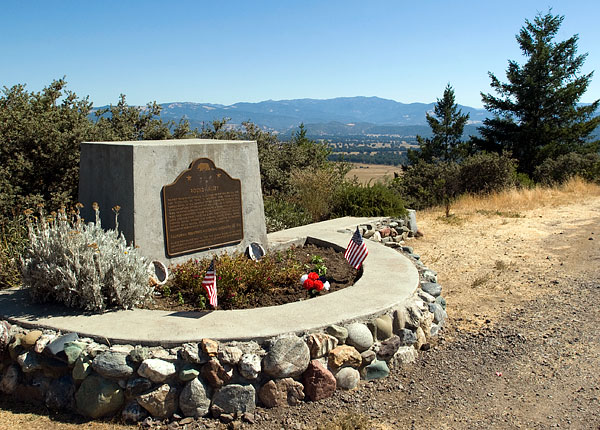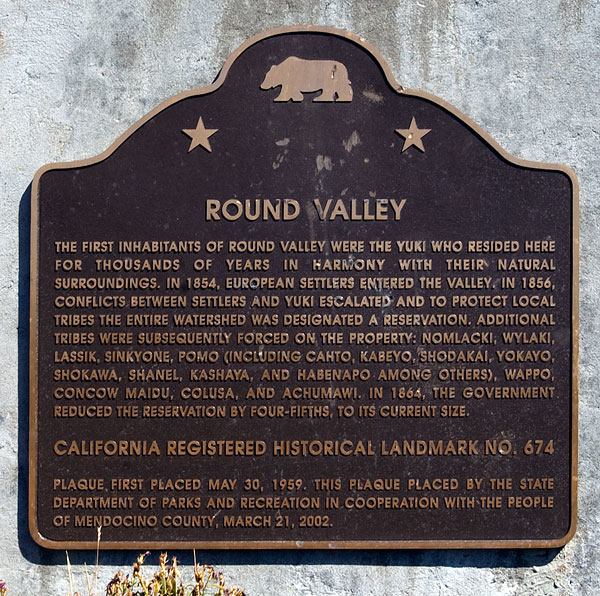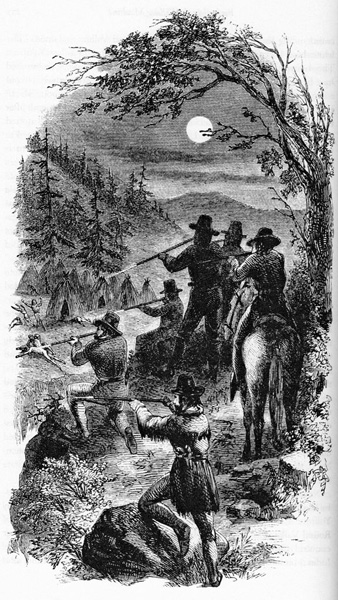California Historical Landmarks in Mendocino County
California Historical Landmark 674
Round Valley
Highway 162 Inspiration Point At Milepost 23.7
Five Miles South of Covelo
Discovered 1854


(Click Photo to Zoom)
The first inhabitants of Round Valley were the Yuki who resided here for thousands of years in harmony with their natural surroundings. In 1854, European settlers entered the valley. In 1856, conflicts between settlers and Yuki escalated and to protect local tribes the entire watershed was designated a reservation. Additional tribes were subsequently forced on the property: Monlacki, Wylaki, Lassik, Sinhtone, Pomo (including Cahto, Kabeyo, Shodakai, Yokayo, Shokawa, Shanel, Kashaya, and Habenapo among others), Wappo, Concow Maidu, Colusa, and Achumawi. In 1864, the government reduced the reservation by four-fifths, to its current size.
California Registered Historical Landmark No. 674
Plaque first placed May 30, 1959. This plaque placed by the State Department of Parks and Recreation in cooperation with the people of Mendocino County, March 21, 2002.

This valley was discovered by Frank M. Azbill, who arrived from Eden Valley on May 15, 1854. During the same year, Charles Kelsey from Clear Lake also visited it and George E. White sighted it from Blue Nose.
Citation from California Office of Historic Preservation

Serranus Clinton Hastings
Instigates a Round Valley Indian Massacre
Hastings College of the Law in San Francisco was named after Serranus Clinton Hastings (1814–1893), one of the wealthiest men in California and the state’s first chief justice.
In 1850, California legalized the kidnapping and forced servitude of Indians by white settlers. The governor declared, "a war of extermination will continue...until the Indian race becomes extinct...." An 1851 legislative measure gave settlers the right to organize lynch mobs and submit their expenses to the government.
In 1854, when the first six white settlers arrived in Round Valley, between 6,000 and 20,000 Yuki Indians lived in the area. The six settlers immediately attacked the Yuki without provocation, killing forty of them. By 1855, Yuki women were being kidnapped and sold to miners and settlers.
Hastings masterminded one set of massacres.
Benjamin Madley, history professor at UCLA, calculates that Hastings sponsored massacres which killed at least 283 men, women and children, the most deadly of 24 known California state militia campaigns.
In 1878, Hastings donated $100,000 in gold coins to found California’s first law school in San Francisco. It was “to be forever known and designated as ‘Hastings’ College of the Law.”
In 2022, the name Hastings was removed and the school was renamed University of California: College of the Law San Francisco.
Source: Wikipedia and The New York Times
